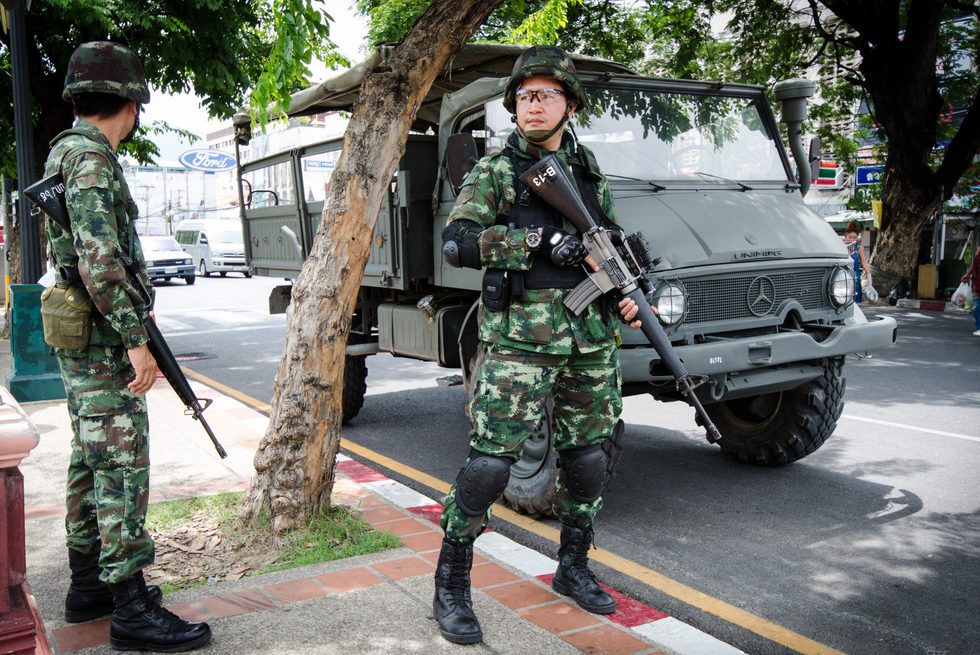Questioning Thailand’s Rural-Urban Divide
From the Series: The Wheel of Crisis in Thailand
From the Series: The Wheel of Crisis in Thailand

Among the many troubling features of Thailand’s ongoing political crisis is its persistent description as an urban-versus-rural conflict. Rural-urban oppositions are especially prominent in partisan rhetoric and are used to some degree by both sides but with particular vitriol by those identified with Yellow Shirt and related anti-Thaksin positions. However, a great deal of Thai- and English-language media commentary deploys similar terms, evoking a clash that pits urban elites and middle classes against “the rural masses” (see e.g., Pravit Rojanapruk 2010). Yet, to describe the present crisis as a rural-urban conflict only reinforces longstanding social hierarchies by obscuring the inequalities that cut across both urban and rural Thai settings. In other words, to depict the contemporary political crisis as a rural-urban divide greatly over-simplifies the complex histories of contested citizenship at work in the present moment.
This is not to deny that the experience of citizenship in Thailand reflects disparities that to some degree fall along geographic lines (see also Arafat Bin Mohamad, this series). Throughout much of the twentieth century the Thai state’s focus on urban (primarily Bangkok-centered) investment and development left outlying provinces, and rural communities in particular, significantly underfunded, lagging in services and infrastructure. Although such center-periphery dynamics have long historical roots, Thailand’s recent decades of dramatic economic growth have only strengthened national discourses in which city and village stand as contrasting icons. In varied contexts—from popular culture to public policy—the city, especially the capital Bangkok, represents the privileged center of national sophistication, wealth, and being “up-to-date” (than samay), while villages and “country-folk” (khon baan nohk) remain “outside” (nohk) on the periphery of national worth. At times these ideological constructions can convey a nostalgic reverence for rural simplicity, locating Thai identity in an idealized agricultural tradition. Yet, even such celebratory images work to justify rural residents’ exclusion from contemporary arenas of “development” (kan phattana) and “progress/prosperity” (khwam caroen) by linking villagers’ national worth to the simplified ways and limited aspirations of an imagined past.
These geographic distinctions—and the symbolic hierarchies they encode—fail to capture the lived realities and ambitions of actual Thai citizens even as their ideological effects play out in significant ways. My own ethnographic work documents how the essentialization of rural-urban divisions has helped to sustain flows of cheap and flexible labor, particularly between communities in Thailand’s Northeast region and industries in Bangkok. More than two decades ago, when I began this research, rural residents were already fully aware of their representation as country bumpkins and provincial hicks. Indeed, for many migrants the decision to enter urban employment was motivated not only by material need and household obligations but also by keen desires to acquire the commodified signs and experiences emblematic of modern Thai citizenship and national belonging. Such patterns of mobility actively blurred rural-urban differences, as agricultural livelihoods relied increasingly upon wage-based incomes and mobile labor fueled the flexible accumulation of Bangkok’s “miracle” years of economic growth.
This close integration of provincial livelihoods with urban-identified circuits of production and consumption has continued apace since the 1990s, strengthened by ongoing and extensive labor mobility (both domestic and transnational) and other forms of rural diversification. Access to non-farm income has enabled many households to replace older wooden homes with more “up-to-date” concrete-block housing and to acquire a wide-range of consumer goods—from motorbikes and pickup trucks to mechanized plows, mobile phones, and refrigerators—dramatically transforming agricultural communities across the nation. Despite such changes, or perhaps because of the heightened expectations that have accompanied them, many Thai citizens are well aware that they have not shared equally in the enormous accumulation of national wealth to which their own mobile labor has contributed. Such lived discrepancies have only sharpened dissatisfaction with a symbolic hierarchy that continues to locate rural residents on the periphery of national value and outside the bounds of substantive citizenship (see also Elinoff, this series).
The aspirations nurtured by these social and economic transformations have gained little recognition among more privileged sectors of Thai society. For example, Yellow Shirt activists (and their successors, including many who have applauded the military coup of May 2014) claim authority as knowledgeable and cosmopolitan actors in contrast to the presumed ignorance and gullibility of khon baan nohk. This sensibility underlies some of the most pejorative rhetoric circulating in the current conflict, such as the common slur “buffalo,” used to refer to Red Shirt loyalists. As an epithet, “buffalo” not only dehumanizes its targets but also evokes the animal most closely associated with the dirt and toil of traditional rice cultivation: the water buffalo. The anger and disdain associated with this term has led some to consider its use a form of racism, in part because it is often directed at the ethnic Lao populace of Northeast Thailand. Most certainly, it reflects a profound denial that subordinate khon baan nohk are worthy of recognition as politically aware and materially ambitious actors, in other words, as fellow citizens.
Clearly there is no simple explanation for a decade-long conflict that continues to escalate. Thailand’s current predicament is rooted not in a clear rural-urban divide but in the failure of such metaphors to address a diverse, mobile citizenry’s lived experiences of exclusion. Far from being politically naive khon baan nohk, the majority of Thai citizens are eager to envision a nation more responsive to their needs, a nation in which they can help set the terms of their own inclusion. Any sustainable resolution of Thailand’s political divisions will therefore need to acknowledge and address the ideological fallacies of Thailand’s rural-urban divide. In the present moment, such a shift seems a distant prospect.
Pravit Rojanaphruk. 2010. “Some Attitudes towards Red Shirts Shameful.” The Nation(Bangkok), April 1.